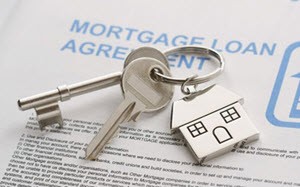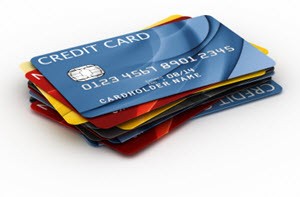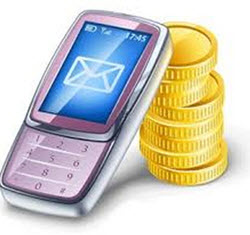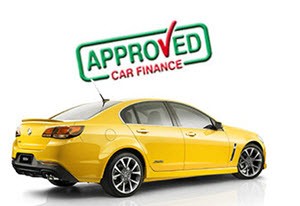Loans
 Mortgage loan
Mortgage loan
A mortgage loan is a loan where the lender have real property as security for the debt. In everyday speech, we often refer to the loan itself as the mortgage, e.g. “our mortgage on our house is $1.2 million”. From a strictly legal perspective, it is however the house that is the mortgage (i.e. the security for the loan).
If the borrower defaults on their loan, the lender is allowed to take possession of the secured real property. This is called foreclosure or repossession. The secured lender’s rights over the secured property have priority over the rights of unsecured lenders.
Mortgage loans tend to be long-term and low-interest compared to most other loans.
We recommend that you always compare interest rates between different banks before you apply for a mortgage. You can either contact each bank and see what interest rate they can offer you or you can use a rate comparison website. If you live in the US we recommend that you use bankrate.com. A very trusted source of information. If you live in another country you will need to visit a website that focus on your country. There are plenty of good websites that allow you to compare interest rates and you can find one for almost any country. As an example we can look at this Australian website and this Swedish website. The best way to find a good website in your country is to search on Google for “compare interest rate + country name” in your language.
Checking account credit
A checking account is a transactional deposit account held at a financial institution, such as a bank. A checking account will allow for both withdrawals and deposits. It is often possible to get a credit linked to the checking account. You get preapproved for a certain credit amount and can use it at your own discretion. Having this type of preapproved credit available for unforeseen circumstances is usually much less costly then using payday loans, sms loans, pawnbrokers and similar.
Credit card
A credit card offers unsecured consumer debt. A common credit card set up is the one where you are sent a monthly bill totaling your purchases. If you pay the bill in full, no interest is charged. If you don’t pay the bill or pay only part of the bill, interest will be charged on the remaining principal.
 There is typically a minimal payment that must be made every month (based on the size of the principal). Failure to pay the minimal amount will incur late fees, and can also be cause for a hike in interest rate. Many credit card companies do give their clients the opportunity to use one or more months of “grace” each year, i.e. months where you don’t need to pay even the minimal amount on your credit card debt.
There is typically a minimal payment that must be made every month (based on the size of the principal). Failure to pay the minimal amount will incur late fees, and can also be cause for a hike in interest rate. Many credit card companies do give their clients the opportunity to use one or more months of “grace” each year, i.e. months where you don’t need to pay even the minimal amount on your credit card debt.
Credit cards are typically used to pay for gods or services, but many credit cards will also allow you to make a cash withdrawal. Cash withdrawals are often less favorably treated and can for instance come with a special cash advance fee.
Many credit card companies will give their users certain perks to encourage the use of credit cards over cash. You can for instance get special credit card insurance in the form of travel insurance, online purchase insurance, etc.
![]()
All loans below this point are very expensive. We recommend against using any of them unless it is absolutely necessary and you have exhausted all other options. My personal experience with these loans is very limited. I have therefore based the rest of the article on information from nyc.gov and Sverigekredit.se (website in Swedish)
Payday loan
A traditional payday loan is a loan that must be paid back on your next payday. Today, loans market as payday loans can have a somewhat longer payback period, but they are still short-term loans.
Some lenders will require proof of employment before they grant you a payday loan, while others are okay with other forms of income, such as welfare payments, unemployment benefits, sick benefits, a pension, monthly insurance settlement, etc.
In countries where checks are commonly used, you may have to “secure” your payday loan by writing a post-dated check covering the full amount of the loan plus interest and fees. If you don’t payback your loan on the payday, the lender will cash the check.
Payday loans typically come with high fees and/or high interest rates.
SMS loan
An SMS loan is a loan contract entered through SMS (mobile texting). SMS loans are particulary common in the Nordic countries, where the tradition of more traditional payday loans were never well-established and where SMS loans entered the market in the early 2000’s to fill the needs of consumers wanting quick and easily accessible small, unsecured loans.
 SMS loans are caracterized by the quick and efficient approval/decline and payout process. After sending in your application via SMS, you will typically be approved or declined very quickly. If you are approved, the money will be available in your account the next day. When SMS loans first began to appear in Scandinavia, many lenders would give the borrowwer access to the borrowed amount within 15 minutes. This type of lending received heavy criticism from consumer organizations, and that is why most sms lenders nowadays will make you wait until next day before you get access to the cash.
SMS loans are caracterized by the quick and efficient approval/decline and payout process. After sending in your application via SMS, you will typically be approved or declined very quickly. If you are approved, the money will be available in your account the next day. When SMS loans first began to appear in Scandinavia, many lenders would give the borrowwer access to the borrowed amount within 15 minutes. This type of lending received heavy criticism from consumer organizations, and that is why most sms lenders nowadays will make you wait until next day before you get access to the cash.
SMS loans tend to be small loans. Most companies offering SMS loans will not let you borrow more than $1,500 or so. Also, SMS loans are typically short-term loands (one month is common).
SMS loans are quite often marketed as interest free loans or low-interest loans. In such cases, the lender will typically make money from fees instead, e.g. application fees and handling fees. When the principal is low and the lending term short, it makes sense for the lender to apply large fixed fees rather than trying to make money from interest payments.
SMS loans contracts often stipulates substantial penalty fees and/or interest hikes if you fail to pay back your SMS loan within the predetermined time.
Pawning
A pawnbroker will offer secured loans where personal property is used as collateral. To get one of these loans, you will typically need to leave the security (the item) with the pawnbroker. You pawn your item for a specified amount of time. You need to return to the pawnshop and pay the principal, interest and (if applicable) fees to get your item back. If you don’t do this within the stipulated period, the pawnshop will sell your item and keep the money. In most jurisdictions, pawnbrokers will not report a defaulted loan so it will not affect your credit report. Examples of commonly pawned items are jewelry, consumer electronics, musical instruments, tools, gold objects and gem stones.
Upscale pawnshops are typically not called pawnshops but “loan offices” or “high-end collateral lenders”. They accept items such as fine art, luxury cars, high-end jewelery, wine collections, and similar.
Many pawnbrokers are also licensed secondhand dealers, so if you are hesitant about your ability to pay back the loan you can sell your item right away instead. You will normally get a better price when selling your item as compared to pawning your item and then not collecting it.
Since the late 1990’s, pawnshops have been available online. They typically require you to send them information online about the object (photos, description, receipts, etc) when you apply for the loan. If the loan is accepted, you must ship the object to the pawnbroker and will not receive any money until the object has been received by the pawnbroker.
Vehicle title loan (car loan)
A loan where a vehicle is used as collateral is known as a car title loan, auto title loan, vehicle title loan, pink slip loan or logbook loan, or simply car loan or motorcycle loan, depending on the circumstances of the individual loan.
 Unlike a pawnshop that will take possession of the collateral until you pay back your loan, lenders offering vehicle title loans will let you use the vehicle while you gradually pay back your loan + interest and fees. In this sense, vehicle title loans are similar to traditional mortgage loans for real estate. The lender will place a lien on the vehicle title and the lien will not be removed until the loan is paid back in full, including interest and fees. If the borrower defaults on the loan, the lender is liable to repossess the vehicle.
Unlike a pawnshop that will take possession of the collateral until you pay back your loan, lenders offering vehicle title loans will let you use the vehicle while you gradually pay back your loan + interest and fees. In this sense, vehicle title loans are similar to traditional mortgage loans for real estate. The lender will place a lien on the vehicle title and the lien will not be removed until the loan is paid back in full, including interest and fees. If the borrower defaults on the loan, the lender is liable to repossess the vehicle.
The most common type of vehicle loan is the car loan. A car loan is typically used to finance the purchase of the car used as collateral. It is common for car dealers to work together with credit companies, so that you can apply for and be approved for a car loan at the car sales shop. In many cases, the value of the car will be more important for the approval of the loan than the financial situation of the borrower. Car loans are available for both new cars and used cars, but you will typically need to purchase your car through a licensed dealer to be approved for the loan.
N.B! There are vehicle loans that are not connected to the purchase of a vehicle, but where the vehicle is simply used as collateral. These loans tend to come with a significantly higher interest rate than the car loans described above.
Refund anticipation loan (RAL)
A refund anticipation loan (RAL) is a secured short-term consumer loan that can be obtained when you have received information about the size of your expected tax return but is yet to receive your refund into your account. The loan is secured by your exceptions tax return.
The term RAL is most commonly used in the United States. In Canada, a similar loan is available called tax rebate discounting.
This article was last updated on: May 17, 2015